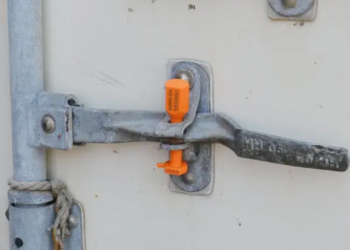ISO 17712 seals play a crucial role in ensuring the security and integrity of cargo containers during transit. These seals are utilized to deter tampering, theft, and unauthorized access to the goods within containers, thereby safeguarding the global supply chain. The ISO 17712 standard outlines requirements for the design, materials, and testing of security seals, primarily used for shipping containers.
Regular testing for compliance with the ISO 17712 standard is essential to maintain the effectiveness of these security measures. However, the frequency of testing can vary based on several factors, including the nature of the cargo, the security risks involved, and the regulatory requirements of different countries and industries.
Security Threat Landscape:
One of the primary factors influencing the frequency of ISO 17712 seal testing is the current security threat landscape. If there is an increase in theft or tampering incidents within a specific region or industry, it may necessitate more frequent testing to ensure that the seals can withstand emerging threats. Regular evaluation of the latest security breach trends can help determine whether adjustments to the testing frequency are required.
Cargo Type and Value:
The type and value of the cargo being transported also influence the testing frequency. High-value or high-risk cargo may require more frequent testing to mitigate potential losses. Perishable goods, hazardous materials, and sensitive items could be more attractive targets for criminals, necessitating stricter compliance testing to uphold security standards.
Regulatory Requirements:
Different countries and regions might have varying regulatory requirements concerning security seal compliance testing. Organizations involved in international trade must adhere to these regulations to avoid penalties and disruptions to their supply chain operations. Compliance with local and international regulations might dictate the minimum frequency of testing to ensure that containers meet security standards across borders.
Supply Chain Duration:
The length of time a cargo container spends in transit can influence the testing frequency. Containers with longer transit times are exposed to a higher risk of tampering or theft, especially if they pass through multiple jurisdictions or are subject to various handling processes. In such cases, more frequent testing might be necessary to ensure the seals’ effectiveness throughout the entire journey.
Historical Incidents:
Past incidents of tampering, theft, or unauthorized access can serve as indicators of potential vulnerabilities in the security system. If there have been instances of breaches in the past, it is advisable to increase the frequency of compliance testing and potentially upgrade to more advanced seal technologies to prevent similar occurrences in the future.
Technological Advancements:
As technology evolves, so do the methods employed by criminals to bypass security measures. Regularly assessing the technological advancements in both security seals and tampering techniques is crucial to adapting compliance testing strategies. If new vulnerabilities are identified, testing frequency might need to be adjusted to address these emerging threats.
Conclusion:
the frequency of ISO 17712 seal compliance testing should be determined through a comprehensive assessment of the security threat landscape, the nature of the cargo, regulatory requirements, historical incidents, transit duration, and technological advancements. A proactive approach to testing will ensure that cargo containers remain secure throughout their journey and that organizations can confidently participate in the global supply chain without compromising the integrity of their goods. It’s essential to strike a balance between security and operational efficiency, and by staying informed and adaptable, organizations can make well-informed decisions about the appropriate testing frequency for ISO 17712 seals.











